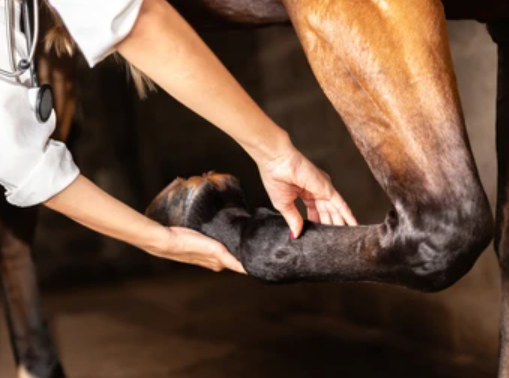The Therapeutic effects of Autologous Platelets-Rich Plasma Gel on Cutaneous Wound Healing in Rescued Horses
Cutaneous wounds are a common occurrence in horses, especially in those that are involved in racing or other strenuous activities. The use of platelet-rich plasma (PRP) gel has been shown to have therapeutic effects on cutaneous wound healing in horses. PRP is a concentration of platelets derived from the horse’s own blood, which contains growth factors and other proteins that can aid in tissue repair.
A recent study investigated the use of autologous PRP gel on cutaneous wound healing in rescued horses. The study involved 18 horses with cutaneous wounds of various sizes and severity. The horses were divided into two groups: one group received PRP gel treatment, while the other group received standard wound care.
The PRP gel was prepared using a double centrifugation technique, which involved collecting blood from the horse and processing it to obtain a concentrated platelet-rich plasma gel. The PRP gel was then applied to the wound site, and the wound was covered with a non-adhesive dressing.
The study found that the horses treated with PRP gel had significantly faster wound healing times compared to the control group. The PRP gel also resulted in improved wound closure and better overall wound healing. In addition, there were no adverse effects reported from the use of PRP gel in any of the horses.
The use of autologous PRP gel in the treatment of cutaneous wounds in horses has several advantages. First, the PRP gel is derived from the horse’s own blood, which eliminates the risk of allergic reactions or transmission of infectious diseases. Second, the PRP gel contains growth factors and other proteins that can promote tissue repair and regeneration.
In comparison, the use of hyaluronic acid (HA) in wound healing has also been studied. HA is a naturally occurring molecule found in the body that is used as a lubricant and shock absorber in joints. It has also been used in the treatment of wounds, as it has been shown to have anti-inflammatory and anti-bacterial properties.
A study comparing PRP gel to HA in the treatment of chronic wounds in humans found that PRP gel was more effective in promoting wound healing and reducing wound size. However, both PRP gel and HA were found to be safe and well-tolerated by patients.
In conclusion, the use of autologous PRP gel in the treatment of cutaneous wounds in horses has shown promising results. PRP gel has been found to promote faster wound healing and better overall wound closure, with no reported adverse effects. While HA also has potential therapeutic benefits, the use of PRP gel appears to be more effective in wound healing. Further research is needed to fully understand the potential of PRP gel and other treatments in the field of equine wound healing.








